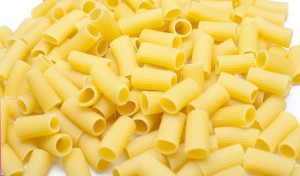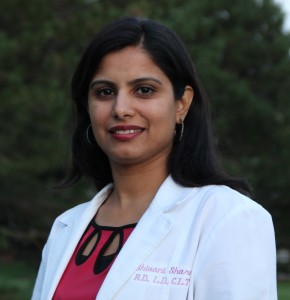Being on gluten free or a wheat free diet these days seems to be more like a new fashion statement than a healthy eating lifestyle change. I see so many people in my clinic who don’t eat wheat/gluten and sometimes it bothers me why people stop eating wheat/gluten unnecessarily. However, I truly believe that certain health conditions improve if you stop eating wheat/gluten but not everyone needs to follow a gluten free diet.
People with gluten allergy, celiac disease, wheat sensitivity, wheat allergy or with certain autoimmune disorders or gastrointestinal disorders certainly need to be on a gluten free or wheat free diet. But going ‘gluten free’ is not necessary for everyone. It is not easy to follow a gluten free diet and you might be missing key nutrients from your diet in doing so.
| Gluten Containing Grain & Products | Gluten Free Grain & Products |
| Wheat, Durumwheat, Spelt, Kamut, Rye, Barley triticale (a hybrid grain made from wheat and rye), Couscous, Bulgur, Semolina, Farina
Other Products: Bran, Bread crumbs, Enriched flour, Gelatinized starch, gluten, Graham flour, Modified food starch, Vegetable gum, Beer, Wheat germ, Hot dogs, Breakfast cereals, Candy, Cornstarch, Crackers, Ice cream, Malt, Soy Sauce, Noodles, Tabbouleh |
Amaranth, Arrowroot Arrowroot, Buckwheat, Corn, Millet, Montina, Oats (when labeled gluten free), Quinoa (seed used as grain), Rice, Sago, Sorghum, Soy, TeffOther Products: Tapioca, Chia seeds, Flaxseeds, Mesquite, Beans and lentils are naturally gluten free that can be substituted for grains. (Example: Garbanzo beans, Garbanzo bean flour, Black beans, Kidney beans, Lentils, Lentil flour) |
First of all, we need to understand the difference between wheat and gluten. In simple words, wheat certainly has gluten but gluten is not just present in wheat. Gluten is present in many other grains and food products. So what is gluten? Gluten is a protein present in many grains. (Please note the simple table to the right that will explain which grains and products have gluten and which do not.)
Now looking at the table ask yourself a question, are you really eliminating gluten or eliminating wheat or are you just suddenly not eating bread anymore and calling yourself ‘gluten free’? If you are not eating bread or pasta but drinking beer or adding soy sauce, you are not on a gluten free diet. If you have suddenly stopped eating bread to lose weight, you are eliminating wheat/gluten and many other unwanted ingredients, that small change is definitely helping you to lose weight. However, eliminating wheat alone will not make you lose weight long term. Losing weight is a lifestyle change, something that you can follow through out your life.
Whole Grain Wheat: We also need to understand that not all grains are created equal. Whole grain wheat is loaded with B vitamins that help with metabolism, minerals like manganese and magnesium that are extremely important for healthy cartilage and bones, high in fiber and have a low glycemic load. On the other hand, burgers, breads or pasta made from all-purpose flour or refined flour lack many nutrients and fiber. So wheat is not the real culprit, it’s the form of wheat that you need to eliminate from your diet.
Understanding Whole Grains: Whole grains can actually be any grain which may or may not contain gluten. According to the Whole Grain Council, whole grain should contain 100% of the original kernel that includes all of the bran, germ, and endosperm of the grain. It can be corn, amaranth, barley, rye, rice, oats or any other grain. Although amaranth, quinoa and buckwheat are not from the same botanical family as grains, due to their nutritional value and use, they are grouped together with grains.
 Wheat Wise: Let’s talk about choosing a healthier form of wheat. Become educated and wise in choosing your wheat. Follow a clean eating routine. Avoid eating processed wheat, white flour, all-purpose flour, enriched flour and wheat products containing many ingredients that are in bread, cereals, bagels, muffins, tortillas, donuts etc. Instead, start with whole wheat flour or wheat berries for salad or whole grain pasta instead of bread. Now another important thing to remember, especially when it comes to eating pasta, is portion control. Whole grains are healthy but you still need to watch your portion size, especially if you are on a weight loss mission. One serving of pasta is ½ a cup. Add more vegetables to your pasta.
Wheat Wise: Let’s talk about choosing a healthier form of wheat. Become educated and wise in choosing your wheat. Follow a clean eating routine. Avoid eating processed wheat, white flour, all-purpose flour, enriched flour and wheat products containing many ingredients that are in bread, cereals, bagels, muffins, tortillas, donuts etc. Instead, start with whole wheat flour or wheat berries for salad or whole grain pasta instead of bread. Now another important thing to remember, especially when it comes to eating pasta, is portion control. Whole grains are healthy but you still need to watch your portion size, especially if you are on a weight loss mission. One serving of pasta is ½ a cup. Add more vegetables to your pasta.
Rotate your Grains: Balance your meals by using a variety of grains.For example, having oatmeal for breakfast, quinoa salad for lunch and whole grain pasta for dinner. That way you would not be eating gluten at every meal but you will still be able to include some in your diet. Rotate your grains to get complete nutrition.
Gluten free diets really work for people who need it but it’s not for everyone.
Visit www.wholegraincouncil.org to get better informed about different kinds of grains.
Reference: http://wholegrainscouncil.org/whole-grains-101/definition-of-whole-grains
 Shivani Sharma is a Registered Dietitian, Author, Health & Wellness Coach and Owner of Right Food Choice LLC. She is currently in private practice with over 15 years of experience in nutrition education and counseling. Shivani specializes in diabetes, chronic kidney disease, gastrointestinal disorders, weight management, autoimmune disorders such as rheumatoid arthritis, IBS, migraine fibromyalgia, chronic fatigue and more.
Shivani Sharma is a Registered Dietitian, Author, Health & Wellness Coach and Owner of Right Food Choice LLC. She is currently in private practice with over 15 years of experience in nutrition education and counseling. Shivani specializes in diabetes, chronic kidney disease, gastrointestinal disorders, weight management, autoimmune disorders such as rheumatoid arthritis, IBS, migraine fibromyalgia, chronic fatigue and more.
Shivani is an Active Member of Academy of Nutrition and Dietetics. She has been in the news and media recently for her  accomplishments. She was recently featured on Detroit FOX news, Macomb Daily Newspaper and Troy Somerset Gazette. She was also interviewed by award winning journalist author and community activist Vanessa Denha for her show on 96.3 and 93.1 FM. Shivani has also been a guest speaker for almost two years for a popular radio station (FunAsia Radio – Dallas, TX). Shivani has presented numerous seminars and presentations in both health & wellness and workplace capacities. Shivani did her bachelor’s degree in science with a major in Psychology. After that she pursued her career further at Wayne State University in Michigan to become a Registered Dietitian.
accomplishments. She was recently featured on Detroit FOX news, Macomb Daily Newspaper and Troy Somerset Gazette. She was also interviewed by award winning journalist author and community activist Vanessa Denha for her show on 96.3 and 93.1 FM. Shivani has also been a guest speaker for almost two years for a popular radio station (FunAsia Radio – Dallas, TX). Shivani has presented numerous seminars and presentations in both health & wellness and workplace capacities. Shivani did her bachelor’s degree in science with a major in Psychology. After that she pursued her career further at Wayne State University in Michigan to become a Registered Dietitian.
